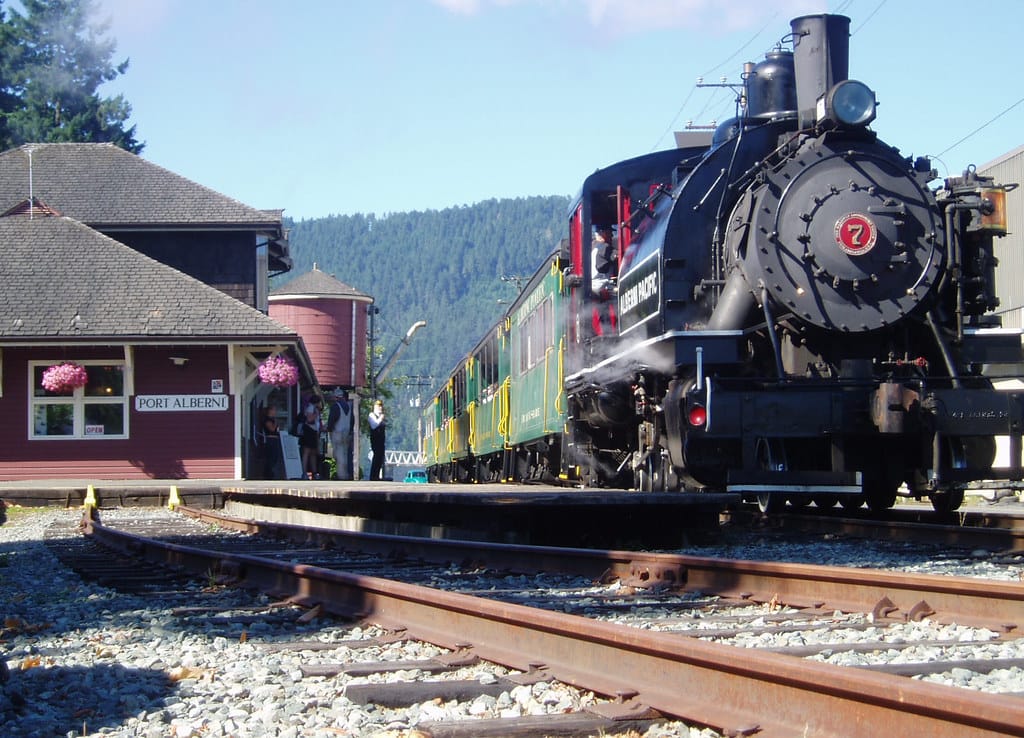
The Bala Lake Railway, or Rheilffordd Llyn Tegid in Welsh, is a narrow-gauge heritage railway that winds along the southern shore of Llyn Tegid (Bala Lake) in Gwynedd, North Wales. Its story is one of transformation—from a standard-gauge industrial line to a celebrated tourist attraction preserving the legacy of Welsh slate quarrying.
The railway’s origins trace back to the Ruabon–Barmouth line, built by the Bala and Dolgelley Railway Company and opened in August 1868. This standard-gauge route connected Bala Junction to Dolgellau, linking with the Corwen & Bala Railway and the Cambrian Railways. Operated by the Great Western Railway (GWR) from 1877, the line served both passengers and freight, supporting the slate industry and rural communities. In 1896, Llanuwchllyn station was expanded with a second platform, passing loop, and signal box.
However, the line’s fortunes declined in the 1960s. Despite initial plans for dieselisation, it was included in the Beeching Report of 1963, which recommended widespread railway closures. Passenger services ceased in January 1965, and goods traffic ended in January 1968. By 1969, the track had been lifted, leaving the lakeside corridor dormant.
The revival began in 1972, when local engineer George Barnes, with support from Tom Jones CBE, saw potential in the scenic lakeside route. They founded Rheilffordd Llyn Tegid Ltd, the first company registered in the Welsh language. With help from former British Rail staff, they rebuilt the line to a 600 mm (1 ft 11⅝ in) gauge, using equipment from disused slate quarries. The first train—a small industrial diesel pulling two open carriages—ran between Llanuwchllyn and Pentrepiod.
Expansion followed swiftly. The line reached Llangower in 1973, Pant-yr-hen-felin in 1975, and Bala (Penybont) in 1976. Though early plans to extend into Bala town were shelved, the railway became a popular attraction, offering stunning views of the lake and surrounding mountains like Arenig Fawr and Aran Fawddwy.
A defining feature of the Bala Lake Railway is its collection of Hunslet quarry locomotives, originally built for the slate industry in North Wales. These include Maid Marian, Winifred, and George B, all steam engines over a century old. The railway also operates heritage diesel locomotives like Meirionnydd, built by Severn Lamb in 1973.
In 2022, the railway celebrated its 50th anniversary with events such as “Bala at 50” and the launch of a commemorative pictorial album. The Llanuwchllyn Heritage Centre, located at the main station, showcases locomotives and exhibits related to the slate industry, including a replica of Lord Penrhyn’s private carriage.
Looking ahead, the Bala Lake Railway Trust is spearheading the Red Dragon Project, aiming to extend the line into Bala town centre. This £4.5 million initiative includes a new terminus, engine shed, visitor centre, and sidings. Land acquisitions and public events like “Bala Rerailed” have brought the vision closer to reality.
Today, the Bala Lake Railway stands as a testament to community spirit, industrial heritage, and the enduring charm of narrow-gauge steam travel. It continues to enchant visitors while preserving the legacy of Wales’s slate railways.
This history was generated using AI and draws on publicly available sources including the Bala Lake Railway official site, the Bala Lake Railway Trust, and Wikipedia.